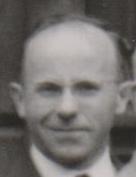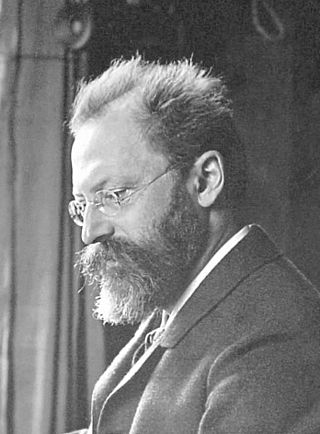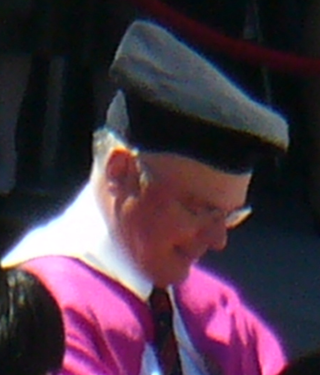
Hermann Ludwig Ferdinand von Helmholtz was a German physicist and physician who made significant contributions in several scientific fields, particularly hydrodynamic stability. The Helmholtz Association, the largest German association of research institutions, is named in his honour.
'Optica is a professional society of individuals and companies with an interest in optics and photonics. It publishes journals, organizes conferences and exhibitions, and carries out charitable activities.

Robert Gaston André Maréchal was a French researcher and administrator in optics.

Siegfried Czapski was a German physicist and optician.

Perley Gilman Nutting (1873–1949) was an American optical physicist and the founder of the Optical Society of America (OSA). He served as its first president from 1916 to 1917. OSA is now known as Optica.
Seibert Quimby Duntley was an American physicist. He was born in Bushnell, Illinois on October 2, 1911.
John Adolph Sanderson was president of the Optical Society of America in 1967. He was the former head of the optics division at Naval Research Labs and the Research and Education Officer for the Optical Society of America.

Floyd Karker Richtmyer was a physicist and educator in the United States.
Joseph Wilfred Goodman is an American electrical engineer and physicist.
Duncan T. Moore was president of the Optical Society of America in 1996 and was awarded the society's Edwin H. Land Medal in 2009.

Kenneth MacClure Baird was a Canadian physicist, metrologist and inventor, born of Canadian parents in China in 1923.
Archie Garfield Worthing was an American physicist. Starting in 1925 he served as head of the physics department at the University of Pittsburgh, and was president of the Optical Society of America during 1941–42.
Wilbur B. Rayton was president of the Optical Society of America from 1933–34.
The Journal of the Optical Society of America is a peer-reviewed scientific journal of optics, published by Optica. It was established in 1917 and in 1984 was split into two parts, A and B.
Richard C. Powell is an American professor emeritus of physics and vice president emeritus of the University of Arizona (UA), whose career focused on research in materials science and laser optics. He served as president of the Optical Society of America in 2000.
The David Richardson Medal is awarded by the Optical Society to recognize contributions to optical engineering, primarily in the commercial and industrial sector. The award was first made in 1966 to its namesake David J. Richardson. He received it for distinctive contributions to the ruling and replicating of gratings, used to determine the transfer functions of lenses. There is a prize associated with the medal.

Maximilian Jacob Herzberger was a German-American mathematician and physicist, known for his development of the superachromat lens.

David A. B. Miller is the W. M. Keck Foundation Professor of Electrical Engineering at Stanford University, where he is also a professor of Applied Physics by courtesy. His research interests include the use of optics in switching, interconnection, communications, computing, and sensing systems, physics and applications of quantum well optics and optoelectronics, and fundamental features and limits for optics and nanophotonics in communications and information processing.
The Frederic Ives Medal is the highest award of the Optical Society, recognizing overall distinction in optics. The prize was established in 1928 by Herbert E. Ives in honor of his father, Frederic Ives. Initially awarded every two years, it has been awarded annually since 1951. The prize is funded by the Jarus W. Quinn Ives Medal Endowment.
Arti Agrawal is a scientist and engineer known for her work on computational photonics as well as diversity, equity, and inclusion in STEM; she has been recognized in both of these areas by a number of awards. Her research is focused on numerical modeling and simulation of photonic devices and optical components. Agrawal is currently serving as Associate Professor and the Director of Women in Engineering and Information Technology at the University of Technology Sydney and Associate Vice President of Diversity for the IEEE Photonics Society.








